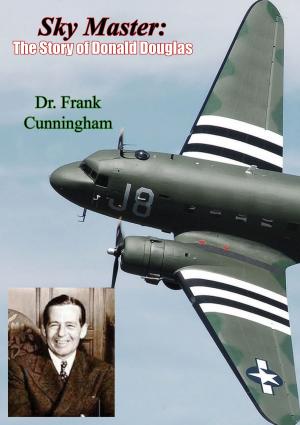| Author: | Major Danny M. Davis | ISBN: | 9781782896722 |
| Publisher: | Tannenberg Publishing | Publication: | August 15, 2014 |
| Imprint: | Tannenberg Publishing | Language: | English |
| Author: | Major Danny M. Davis |
| ISBN: | 9781782896722 |
| Publisher: | Tannenberg Publishing |
| Publication: | August 15, 2014 |
| Imprint: | Tannenberg Publishing |
| Language: | English |
The purpose of this paper is to answer two questions. The first question is: Is it feasible to use airborne forces to penetrate enemy airspace and to conduct a vertical envelopment to effect deep operational maneuver? If it is feasible, what are the employment options available for the use of such an airborne force in the conduct of a modern military campaign? To examine these questions, the paper begins with some definitions to provide a common frame of reference. The use of airborne forces in World War II is next examined to determine if the use of airborne forces to effect deep operational maneuver is historically feasible. Next, the contemporary threat is discussed as it is relevant to the employment of airborne forces in a modern context. Next, the feasibility of the use of airborne forces with some limitations to conduct deep operational maneuver is established in the context of the maneuver, firepower, and protection aspects of the combat power model. Next, the theory of deep operations and the use of airborne forces to conduct these kinds of deep maneuvers is examined in the theories of Clausewitz, Jomini, Tukhachevskiy, Triandafillov, and Simpkin. Next, six employment options for the use of airborne forces to conduct deep operations in a modern context are deduced. They are: (1) an airborne force can be used to create a second front within a theater of operations; (2) an airborne force can be used to operationally contain an enemy force targeted for destruction within a theater of operations; (3) an airborne force can be used to seize a “bridgehead”...; (4) an airborne force can conduct coups de main against high value targets within a theater of operations; (5) an airborne force can conduct light operations in a theater of operations to disrupt and disorganize the enemy’s rear facilities and networks and have a cumulative operational impact; and (6) an airborne force can conduct expeditionary operations to achieve political, strategic, and operational aims
The purpose of this paper is to answer two questions. The first question is: Is it feasible to use airborne forces to penetrate enemy airspace and to conduct a vertical envelopment to effect deep operational maneuver? If it is feasible, what are the employment options available for the use of such an airborne force in the conduct of a modern military campaign? To examine these questions, the paper begins with some definitions to provide a common frame of reference. The use of airborne forces in World War II is next examined to determine if the use of airborne forces to effect deep operational maneuver is historically feasible. Next, the contemporary threat is discussed as it is relevant to the employment of airborne forces in a modern context. Next, the feasibility of the use of airborne forces with some limitations to conduct deep operational maneuver is established in the context of the maneuver, firepower, and protection aspects of the combat power model. Next, the theory of deep operations and the use of airborne forces to conduct these kinds of deep maneuvers is examined in the theories of Clausewitz, Jomini, Tukhachevskiy, Triandafillov, and Simpkin. Next, six employment options for the use of airborne forces to conduct deep operations in a modern context are deduced. They are: (1) an airborne force can be used to create a second front within a theater of operations; (2) an airborne force can be used to operationally contain an enemy force targeted for destruction within a theater of operations; (3) an airborne force can be used to seize a “bridgehead”...; (4) an airborne force can conduct coups de main against high value targets within a theater of operations; (5) an airborne force can conduct light operations in a theater of operations to disrupt and disorganize the enemy’s rear facilities and networks and have a cumulative operational impact; and (6) an airborne force can conduct expeditionary operations to achieve political, strategic, and operational aims

![Cover of the book Billy Mitchell: Stormy Petrel Of The Air [Illustrated Edition] by Major Danny M. Davis](https://www.kuoky.com/images/2015/november/300x300/9781786252463-h6c3_300x.jpg)

![Cover of the book The Battle Against The U-Boat In The American Theater [Illustrated Edition] by Major Danny M. Davis](https://www.kuoky.com/images/2015/november/300x300/9781786252524-tqEX_300x.jpg)

![Cover of the book Air Power Versus U-Boats - Confronting Hitler’s Submarine Menace In The European Theater [Illustrated Edition] by Major Danny M. Davis](https://www.kuoky.com/images/2014/august/300x300/9781782898900-VTs6_300x.jpg)


![Cover of the book Thunderbolt!: The Extraordinary Story Of A World War II Ace [Illustrated Edition] by Major Danny M. Davis](https://www.kuoky.com/images/2015/november/300x300/9781786251817-P2gc_300x.jpg)

![Cover of the book Fueling the Fires of Resistance — Army Air Forces Special Operations in the Balkans during World War II [Illustrated Edition] by Major Danny M. Davis](https://www.kuoky.com/images/2015/november/300x300/9781786252401-xnBm_300x.jpg)
![Cover of the book Tip Of The Spear: U.S. Army Small Unit Action In Iraq, 2004-2007 [Illustrated Edition] by Major Danny M. Davis](https://www.kuoky.com/images/2014/august/300x300/9781782896395-SexW_300x.jpg)
![Cover of the book Key To The Sinai: The Battles For Abu Agelia In The 1956 And 1967 Arab Israeli Wars [Illustrated Edition] by Major Danny M. Davis](https://www.kuoky.com/images/2014/august/300x300/9781782895794-016v_300x.jpg)


![Cover of the book ARCHIE, FLAK, AAA, And SAM: A Short Operational History Of Ground-Based Air Defense [Illustrated Edition] by Major Danny M. Davis](https://www.kuoky.com/images/2015/november/300x300/9781786253712-TMbs_300x.jpg)